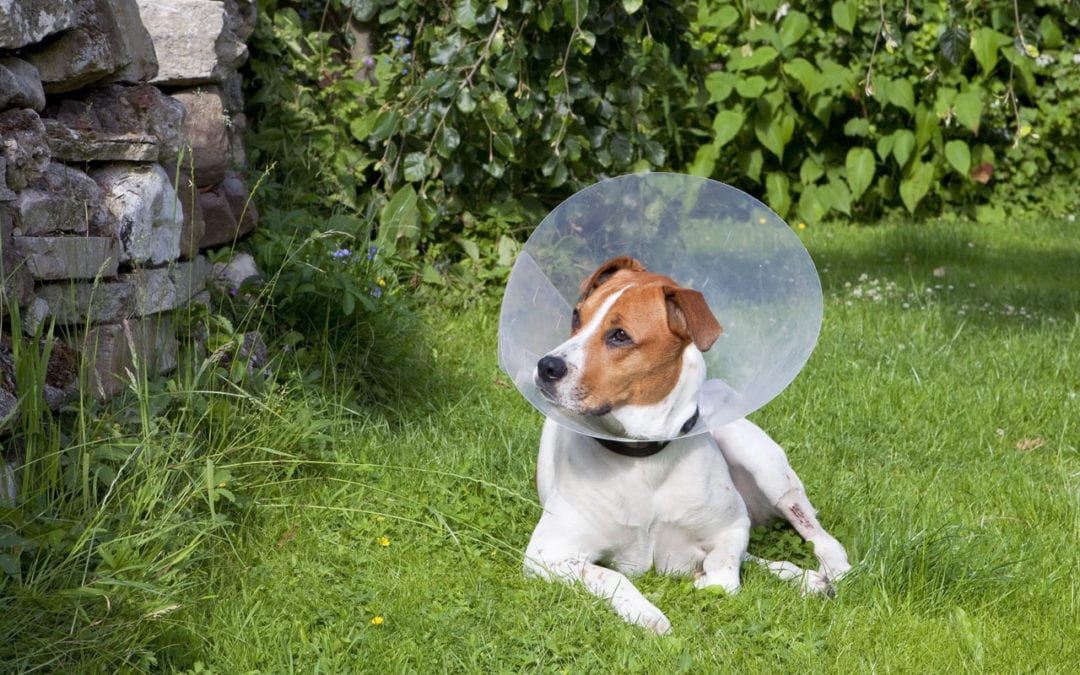Correctly picking the perfect age to spay or neuter your dog has been discussed in the veterinary literature for decades. In more recent years shelter and animal rescue groups have advocated for early-age, 6 months of age and even younger, spay and neuter with the goal of preventing unwanted litters. As an added incentive the surgery is quicker and less complicated prior to sexual maturity in these immature puppies. The recommendations are now changing and recent studies suggest some benefits to waiting until your dog is a bit older to have the surgery performed, especially for larger dogs.
For male dogs:
The signs of sexual maturity in male dogs include lifting their leg to urine mark (even in the house), humping, and overprotectiveness. Some of these behaviours can start at an early age and intensify as they continue to mature until 12 months, or even older for large breeds. During this time they build more muscle as their growth plates close. This maturation of their musculoskeletal system can help prevent certain orthopedic injuries later in life, especially in large breeds. There is also some evidence that certain cancers may be less likely if they are allowed to have some time to reach sexually maturity. Male dogs that are left intact through adulthood and into their senior years can encounter prostate disease, perineal hernias, perianal tumors, and testicular tumors.
When should I neuter my male dog?
Small dogs do not have as many orthopedic issues, therefore it is fine to neuter them on the younger side at 6-12 months of age. For large dogs that are very prone to orthopedic injury/diseases we now recommend waiting to neuter until 9-18 months of age.
For female dogs:
The signs of sexual maturity in female dogs can have some similarity to the males, but they also will come into their first heat (estrous). This may mean up to two weeks of dripping blood, accompanied by moodiness and unwanted attention from male dogs from miles away. For most female dogs, this will happen around 9-10 months of age or older. Once in while we will see a smaller-breed dog show signs of their first heat around 6 months of age. We also see large breed dogs that do not develop their first heat until closer to, or beyond, 12 months of age. There is a significantly higher risk of performing a spay surgery when a dog is in heat due to fragility of blood vessels and propensity for them to bleed internally. Given that, we avoid performing spay surgery while a dog is in heat unless it is an emergency situation. By about a month after the heat cycle, the blood vessels are more stable and the spay surgery can be performed safely. However, after the first heat the uterus and blood vessels have changed irreversibly to a mature state and spay surgery is more challenging than in an immature dog. Benefits that female dogs can see from having spay surgery when they are closer to maturity include lower risk of orthopedic issues, a reduced risk of cancers (especially breast cancer), and a reduced risk of urinary incontinence.
When should I spay my female dog?
We recommend waiting until your dog is at least over 6 months and likely even older for larger dogs. The benefits are much more pronounced in larger dogs, but there is not a lot of difference for lap dogs. Studies have shown that large dogs spayed before 6 months of age experience some higher risk of orthopedic problems and certain cancers and that risk is statistically reduced at 12 months. What happens statistically at each age in between still needs more study. We do know that with each heat cycle there is an increased risk of mammary adenocarcinoma (breast cancer) and risk of pyometra (a life-threatening uterine infection requiring emergency surgery and intensive care). If we are able to allow female dogs to get as old as possible, but manage to spay them just before their first heat, this would seem like the ideal situation, but it is tricky to predict when that first heat will be. Knowing the family history can be helpful, but is still not an exact way to know when the first heat will occur.

